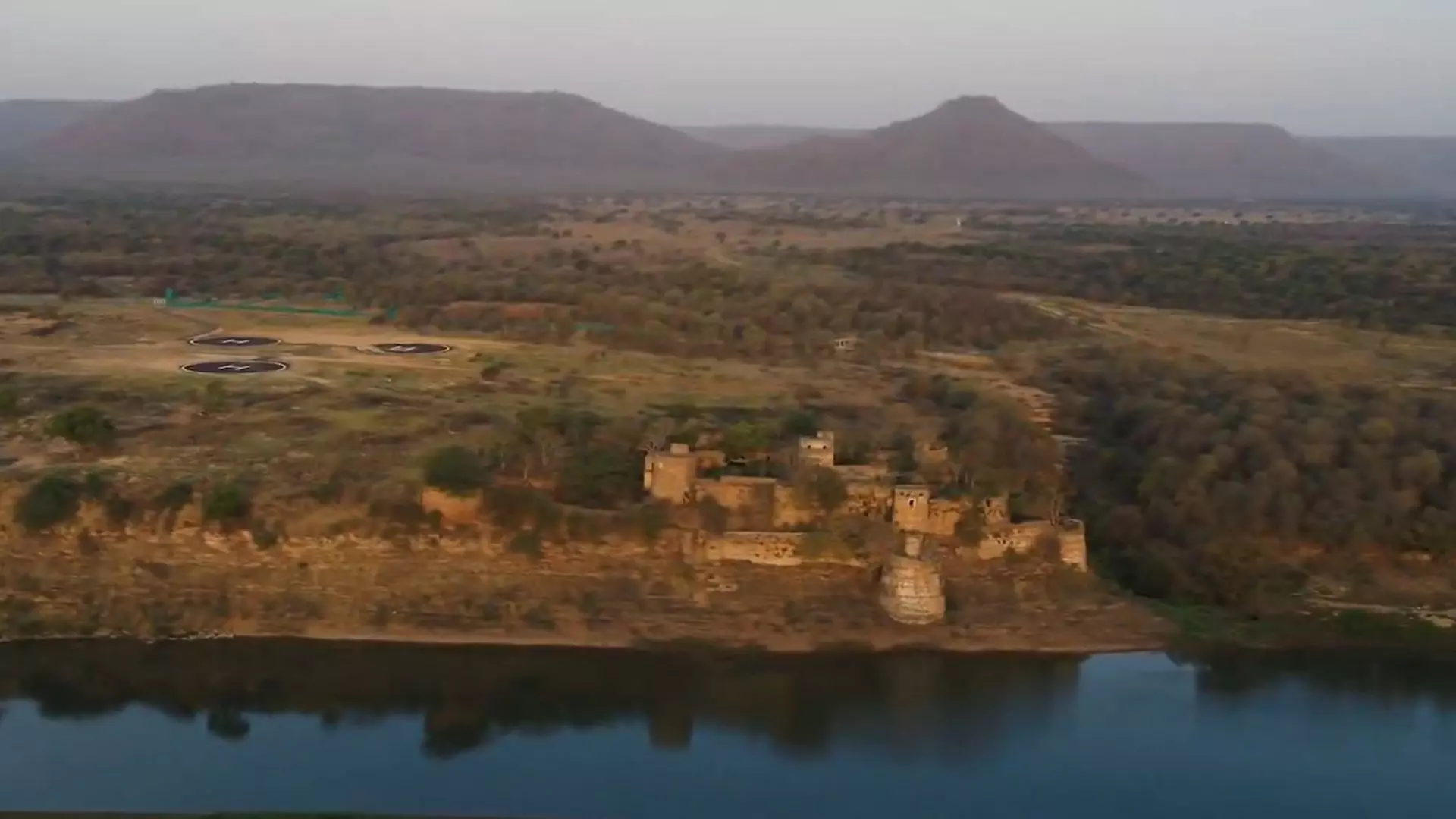Stone Age Rock Art Discovered in Kuno National Park In MP
Archaeologists uncover ancient petroglyphs in Kuno National Park, dating back 10,000-50,000 years, shedding light on early civilizations

Bhopal: In a significant discovery, archaeologists have found Stone Age rock art (petroglyphs) sites in the Kuno National Park, home to cheetahs, in Madhya Pradesh’s Sheopur district.
Petroglyphs were found on the quartzite rocks at several places in the wildlife sanctuary by Professor Giriraj Kumar and his student Ravi Verma recently.
Mr. Kumar is working under an early petroglyphs research project.
“Cup marks are found distributed in a random way, and also in a bilinear pattern in the Kuno National Park. The weathering of and patination on the petroglyphs indicate that the petroglyphs may be of Stone Age dating back to 10,000-50,000 years”, Mr. Kumar, who is the president of the Rock Art Society of India, told this newspaper on Thursday.
Twenty such rock art sites have been discovered in the park, Mr. Kumar, a former faculty member of department of culture and rock art science in the Dayalbagh Educational Institute, Deemed University, Agra, has revealed.
“Further scientific study is needed on the newly discovered petroglyphs which can throw significant light on the early civilization that came up in the area”, he said.
Though rock art sites like Bhadaiya Kund, Pawa Waterfalls, Pohri, and Bhoora Khon waterfalls in Madhya Pradesh’s Shivpuri district, which adjoins Sheopur, have earlier been found, this is the first discovery of the petroglyphs (in the Kuno National Park) in the region.
Significantly, early petroglyphs have earlier been discovered in ‘Daraki-Chattan’ cave in Bhanpura area in river Chambal Valley in Mandsaur district in the state.
Early petroglyphs in Central India were scientifically studied in the state under the EIP Project at Bhimbetka, a world heritage site located around 40 km from here, and Daraki-Chattan Cave.
The EIP (Early Indian Petroglyph) project is a joint venture of the Rock Art Society of India and Australian Rock Art Research Association under the aegis of International Federation of Rock Art Organisations.
Mr. Kumar and Robert G. Bednarik were Indian and Australian directors of the project respectively. The project was sponsored by Archaeological Survey of India, Indian Council of Historical Research and Australia-India Council, Canberra.
Work on this project commenced in 2001 and it is still continuing.
Daraki-Chattan Cave where more than 500 cupules were discovered in 2002-06 is the richest early petroglyph site in the world.
It has been established that petroglyphs found in Daraki-Chattan date back to the Lower Paleolithic age, three to ten times much older than the European rock art, according to Mr. Kumar.
“The physical development of early man might have occurred in Africa, but cognitive and cultural development of early man took place in Asia, and India was the hub of this early development”, Mr. Kumar said.
In the backdrop of the findings in the Daraki-Chattan cave, which have been covered by prestigious international Indian and overseas journals, the latest discovery of petroglyphs in Kuno wildlife sanctuary is very important in understanding the continuity of the petroglyph traditions in the wider region of Madhya Pradesh and in India, he said.
He called for urgent measures by the authorities of Kuno National Park and the Central government for the preservation of the rock art sites.

